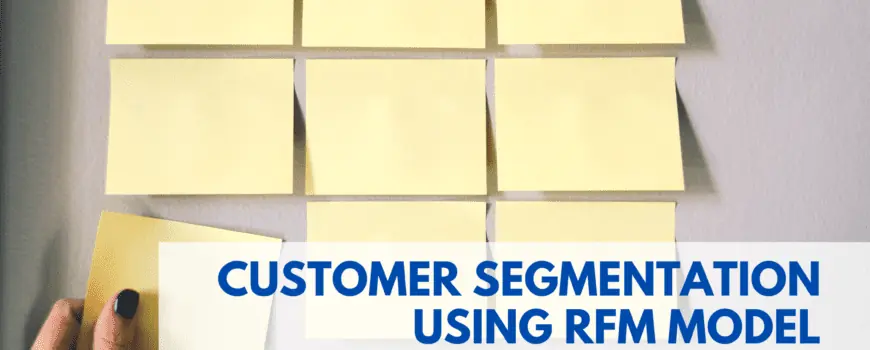Unlocking Marketing Success with RFM Customer Segmentation in Zoho CRM
Off the top of your head, you can probably think of a handful of your ‘best customers.’ Those that have purchased recently, purchase regularly, and spend a decent amount with your company. Have you considered using the RFM model widely applied to your entire book of business? RFM segmentation model allows you to segment or group your customer data for even deeper insights. This means groupings like, “Best Customers,” “Loyal Customers,” and “At Risk Customers” are relatively straightforward to capture. And you can do it now in Zoho CRM!
Keep reading to learn more about the RFM model and how you can put it to use in your business.
What is the RFM model?
This acronym stands for Recency, Frequency, and Monetary value. This model, while not new, can provide you with new levels of customer information when using the data points in tandem.
-
Recency: how recently did your customer purchase from you?
-
Frequency: how frequently does your customer purchase from you?
-
Monetary: how much does your customer spend with your business?
The three dynamics of data in this model combine to give powerful information to your customer behaviors, and can help with strategy, planning and sales approach. In Zoho CRM, this model comes with some predefined and weighted values which makes implementation very straightforward. But first, let’s take a look at a little more about how the RFM model and customer segmentation can benefit your business.
How does the RFM segmentation model benefit your business?
Segmenting RFM data can benefit your business in several ways across sales and marketing departments. At the crux of it is the value in knowing your customer. However, here are a few additional points that illustrate how RFM segment data can be beneficial:
- You can speak to the right audiences at the right time (targeted marketing). When you ensure your promotions are timely and accurate, you improve customer satisfaction and retention. This can ultimately impact your Customer Lifetime Value (LTV), an important KPI for a lot of industries [link Saas & Tech KPI’s article].
- Timely, targeted messaging ensures you avoid marketing fatigue among your audience.
- When you know your customers and in which segment of the RFM model they reside, you can better allocate your marketing budget.
- RFM data can show areas with growth opportunities. For example, that could look like incrementally increasing the frequency of orders a customer makes with your company. Or inversely, using recency data to identify and re-engage customers who may not have purchased recently.
Because the RFM model is numerical, straightforward, and intuitive you will find that its output is relatively easy to understand and interpret. The result is a high-level view of customer behavior that can be mixed and matched for new sales and marketing approaches that weren’t previously possible without the data.
Combining RFM with other Data for deeper insights
 On its own, RFM segmentation data is powerful, but having these metrics to combine with other key performance indicators can provide even greater value. Use the data for the successful customers you already have to determine what you did to acquire them, and then apply this new knowledge to your next acquisition efforts to save time and money.
On its own, RFM segmentation data is powerful, but having these metrics to combine with other key performance indicators can provide even greater value. Use the data for the successful customers you already have to determine what you did to acquire them, and then apply this new knowledge to your next acquisition efforts to save time and money.
An example of this would be to take your highest performing segment (where Recency, Frequency, and Monetary value all rank highly), and overlay geographic data. From this you may be able to see which areas of the country, or world, your best customers reside. Then you can use this information to craft targeted messages to ‘look alikes’ for an acquisition campaign.
Similarly, you can combine RFM data with age, gender, title, products purchased, sales agents they interacted with, company size, and on and on. The result is you can answer such questions as:
- Where are my best customers located?
- How big are their companies?
- What is the title of the person who converts?
- What does the product mix of our most successful customers look like?
And with those answers you can model your business to meet the needs of your best customers.
We hope you’re convinced that the information RFM captures for marketing, sales segmentation, and business strategy can take you a long way.
Put RFM Scoring into Action with Zoho CRM
Zoho CRM introduced this new segmentation feature in 2020. The system comes with some widely applicable segments already defined, with the scoring matrix already completed. The scoring for each segment of R, F, and M ranges between 1-5 points. The number 1 indicates low performance and 5 is high performance. It is probably best to customize your segments based on your business. However, the predefined segments give you a good starting point.
An example of segments could include, “A+ Customers” or best customers who purchase recently, often, and have a high spend. Your “Loyal Customers” might have a good spend and be responsive to promotions. There are a few others in addition to “At Risk” or “Churned Customers” who generally had a high spend, but have not purchased in a while.
Finding these segments in your Zoho CRM is as simple as applying filters to your account list. At that point, you can apply tags, and use them in your sales and marketing campaigns.
Interested in putting the RFM Model and customer segmentation to work in your Zoho CRM? Start a conversation with one of our Sales Architects.

